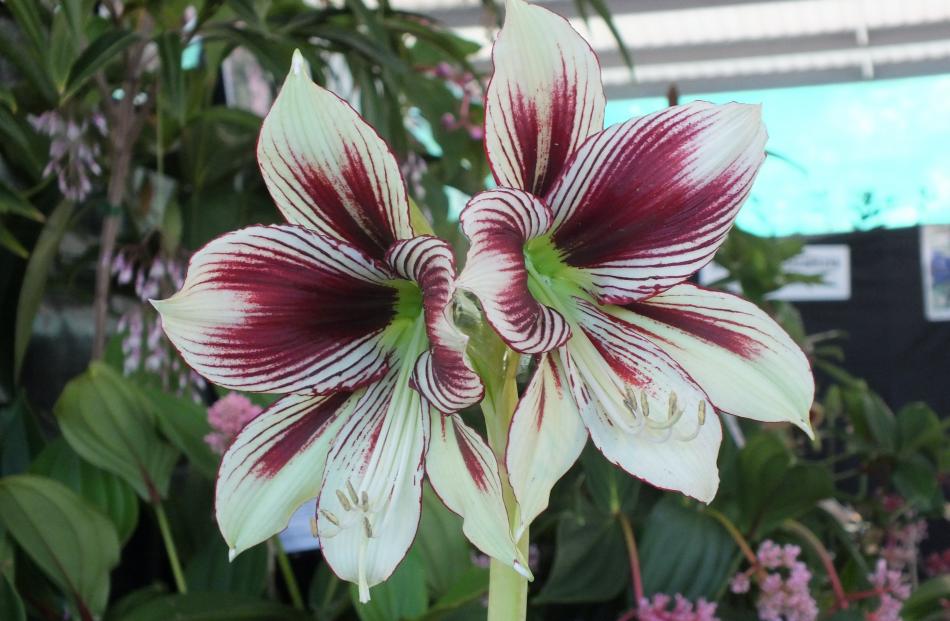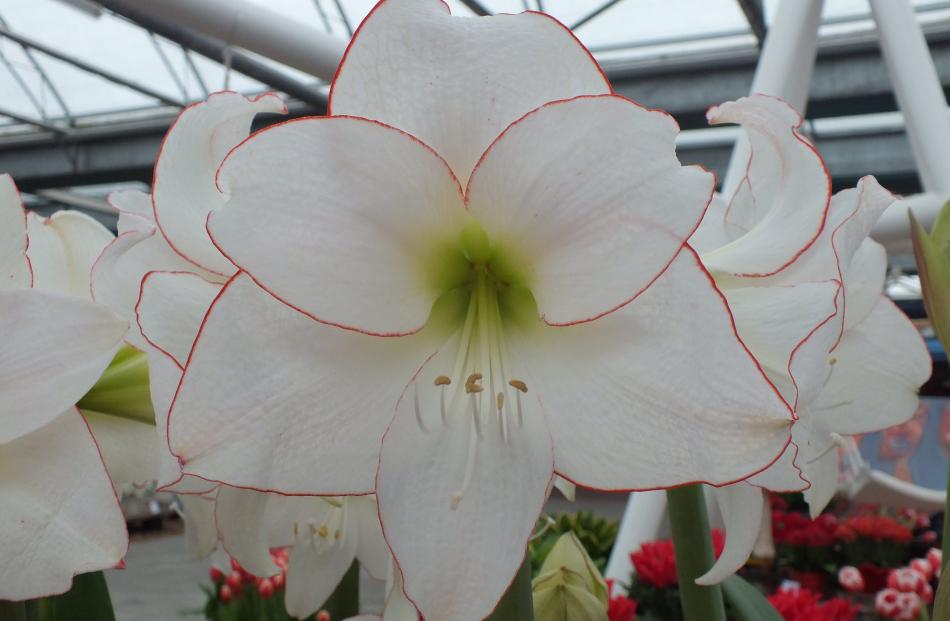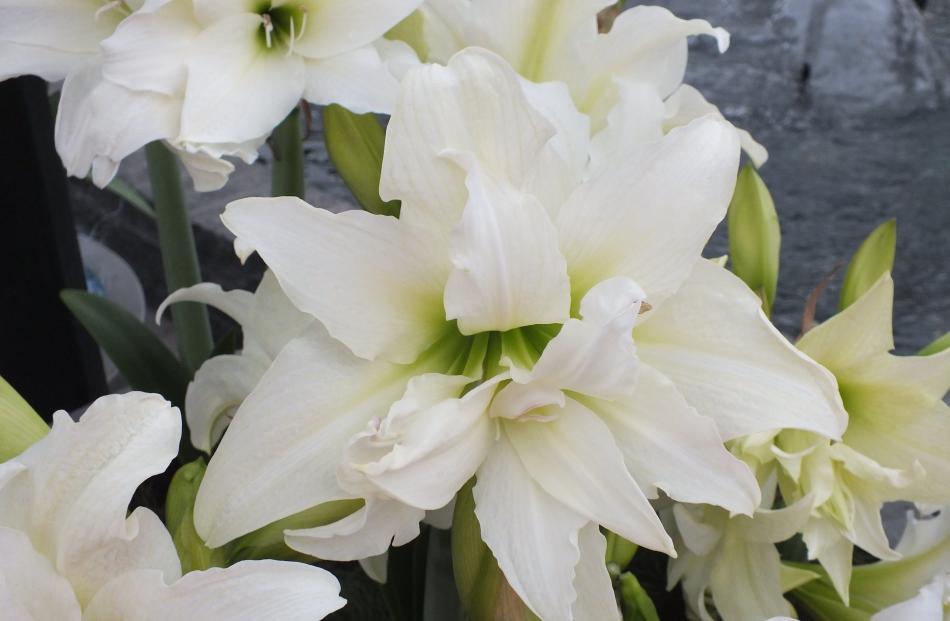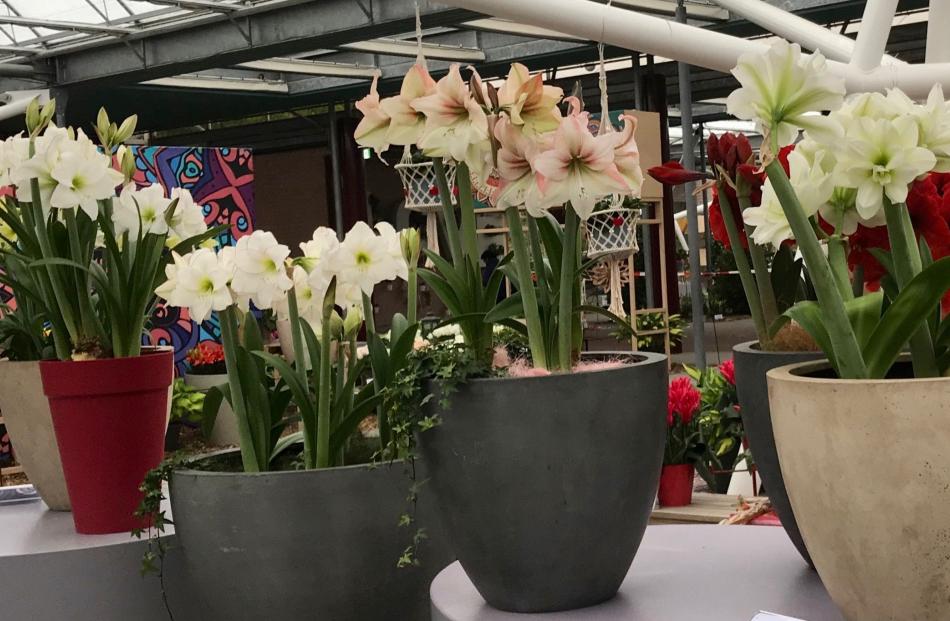Hippeastrum bulbs are hip bulbs, says Gillian Vine.
If you were lucky enough to be given a hippeastrum for Christmas, now is the time to give it some TLC to make sure it will bloom again for years to come.
Sometimes incorrectly called Amaryllis, the fat bulbs come mainly from tropical parts of South America. True Amaryllis, or naked ladies, are from another branch of the Amaryllidaceae family and hail from southern Africa.
There are almost 100 species of Hippeastrum but most of the bulbs sold here are hybrids, derived from just six species. One species you can buy, though, is H. papillo, a Brazilian beauty with bold maroon markings on a greeny-cream background. Papillo means butterfly, a most appropriate moniker.
Of the cultivated varieties, there are reds, pinks, salmons and whites, solid or striped, with single or double flowers.
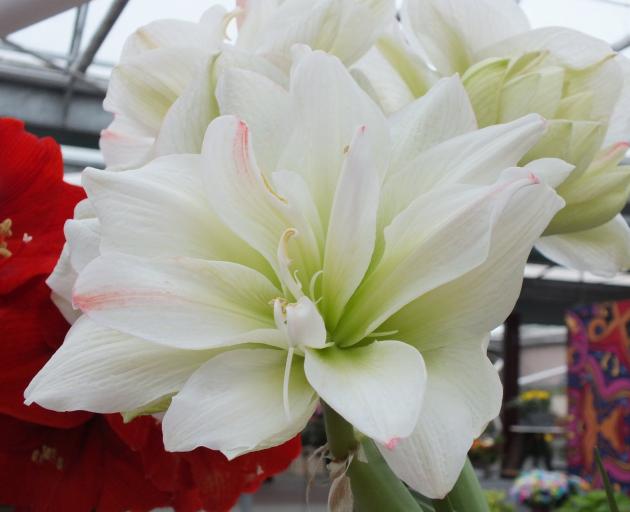
The mixed salmon shades of Terra Cotta Star are delightful, as are most of the other striped varieties but, if asked to name a favourite, I’d opt for Picotee, an adorable white single with delicate red edges to the petals.
Hippeastrums can be grown outdoors in frost-free places but in the south, container growing makes more sense, as their tropical and sub-tropical origins mean the plants are best moved under cover in winter. Potted hippeastrum have another plus: the rather brittle roots tend to snap if the bulbs are lifted, so keeping them contained works better.
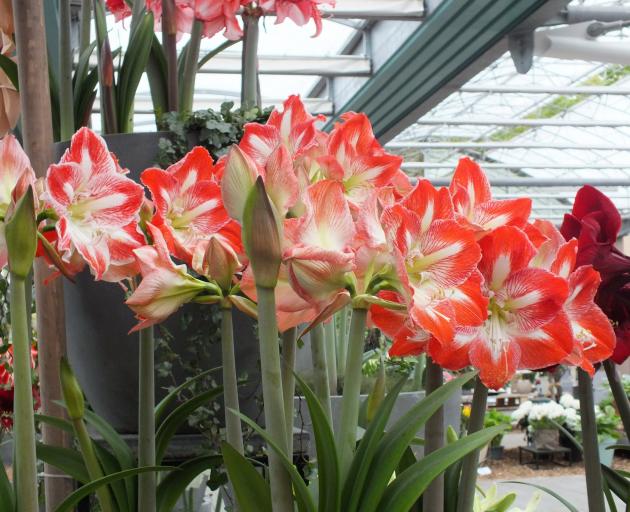
Right now, the flowers will be just a memory and the leaves dead as the bulbs are dormant over the next few months. If you haven’t yet done so, trim off the foliage and flower stems then put potted plants in a shady, cool place (10°C is recommended). Do not water during their dormant period.
When signs of growth start in spring, bring the pots out of seclusion into the light and resume watering lightly at the base of the bulbs. The soil should be moist, not wet, and saucers under pots filled with small stones to ensure good drainage, as overwatering will rot hippeastrum bulbs.
The hollow flower stems, one per bulb, come up first, then the strappy leaves. The flowers will unfold about six weeks later and last up to four weeks in a warm (not hot) sunny spot. As each flower on the stem fades, nip it off so it doesn’t set seed. If you are keen, you could let the seed ripen but as it is said to take 3-14 years from sowing to producing a flower, propagating hippeastrum this way is only for very patient gardeners.
When blooming is over, cut off the stem about 5cm above the bulb.
As the leaves appear, start using a pot-plant fertiliser once a month to build up the plant for next season.
Although a flowering-sized hippeastrum costs $20-$30, it is sometimes possible to buy smaller, end-of-season ones for as little as $3 each. They won’t flower straight away but like the big bulbs, with a little TLC they will reward you with fabulous flowers for years to come.

